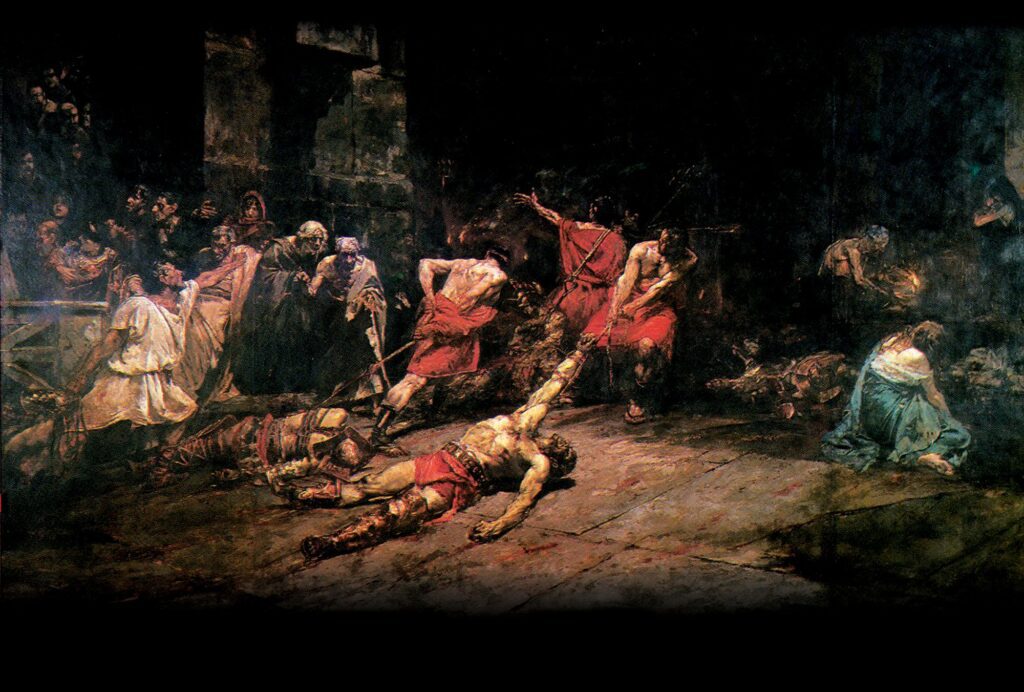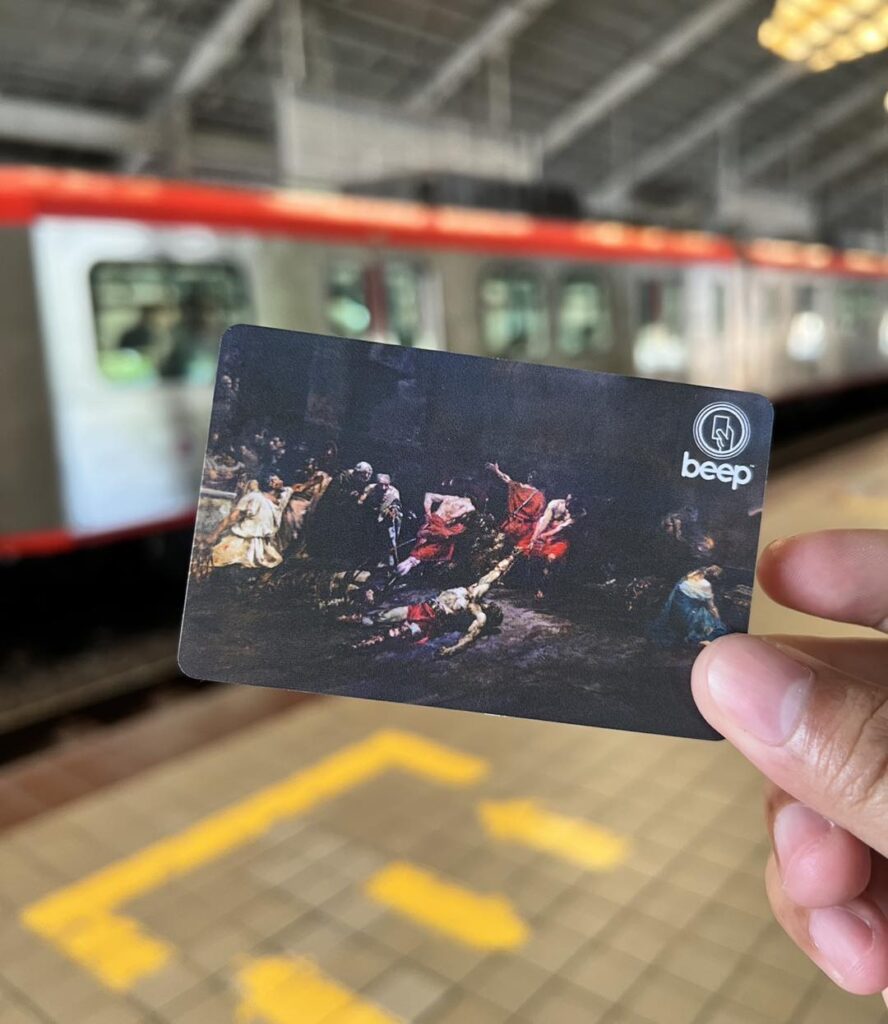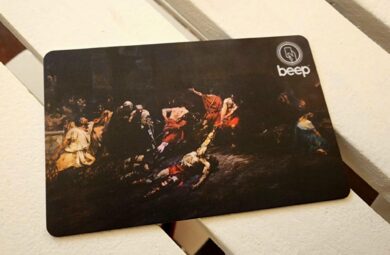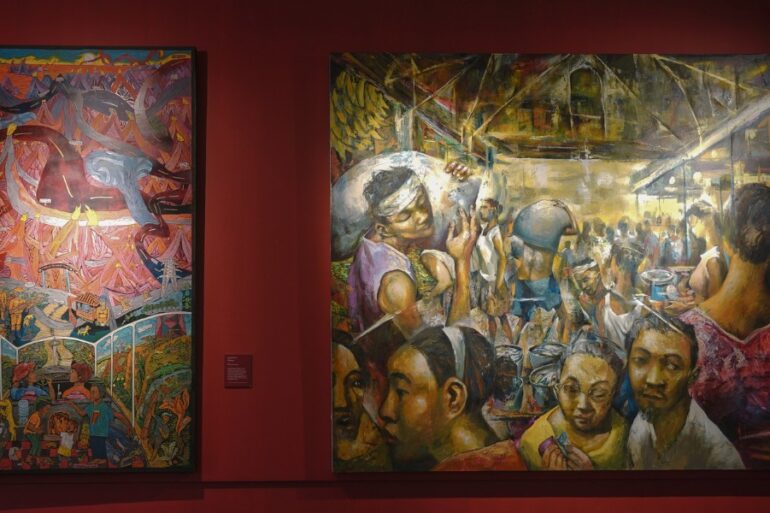A look at Luna’s artistic achievement and his complicated legacy.
On May 20, the National Museum released the Spoliarium card as a way to blend “art appreciation with modern convenience.” This collaborative release puts Luna’s widely renowned masterpiece in full display for commuters to carry around.
The National Museum first released its limited-edition beep cards in October 2023. The designs included silhouettes of the country’s national museums—such as the Museum of Fine Arts, Museum of Natural History, Museum of Anthropology, and the National Museum of the Philippines—making them instant collectibles.

The beep card is a reloadable mode of payment used in rail-based transportation systems across Metro Manila. Past designs have included Wonder Woman, Hello Kitty, FamilyMart, and Lolong the crocodile.
Gladiators and struggles
Juan Luna completed the Spoliarium in 1884, and entered it in the Exposición Nacional de Bellas Artes, where it won the gold medal. Jose Rizal described Luna’s massive oil on canvas painting as an embodiment of “the essence of our social, moral and political life: humanity in severe ordeal, humanity unredeemed, reason and idealism in open struggle with prejudice, fanaticism and injustice.”
Rizal’s lofty analysis, one that intertwines humanist ideals with political insurgency, goes hand-in-hand with the painting’s mammoth scale.
What a fitting receptacle the beep card is for the Spoliarium. While providing convenience to commuters, it is also a symbol of our modern-day struggles in Metro Manila.
In its allegorical representation of colonial violence and oppression, the Spoliarium has been consistently touted as Luna’s masterpiece. It has been noted that it was inspired by a scene from Charles Louis Dezobry’s book, Rome in the Time of Augustus. In the story, a character witnesses a wounded gladiator in the Roman amphitheater’s basement, surrounded by grieving family members. Luna sought to capture this tragic and poignant moment on a vast canvas, resulting in a haunting yet powerful depiction of drama, pity, and terror.
Luna’s creation was also deeply personal, influenced by his grief over his brother Manuel’s death. Both brothers had gone to nautical school and later moved to Spain to pursue their craft—Juan as a painter and Manuel as a violinist.

Unlike his previous work, The Death of Cleopatra, which he painted in secrecy, the Spoliarium was created in public view, attracting many visitors to his workshop in Via Margutta. Luna meticulously developed the painting, using over 100 sketches to complete the monumental work.
What resulted from this painstaking and publicized process is a work that calls to mind not only the Roman Empire’s history of violence but a transposition of that legacy into the Filipino colonial life.
A complicated legacy
Despite the powerful anti-colonial message embedded in his masterpiece, Juan Luna’s legacy is undeniably tarnished by a horrific act of violence that tragically mirrored the brutality he so powerfully condemned on canvas.
Luna’s violent and misogynistic history is marked by a tragic and brutal incident. In a fit of jealous rage, Luna shot his wife, Paz Pardo de Tavera, suspecting her of infidelity.
The altercation took place in a second-floor bathroom where his mother-in-law, Juliana Gorricho, was also present. Juliana died instantly with a shot to the head, her body falling into the bathtub. Paz, found on the floor by neighbors and police, succumbed to her injuries 11 days later. This horrifying event was witnessed by their young son, Andres, who was in the bathroom during the shootings.

How are we to reckon with Juan Luna’s legacy and his role in our history of independence? Historians have argued that Luna played a central role in the awakening of Filipinos to rebellion and everything else is less important, if at all.
Twelve years after Spoliarium won the European contest, the first time by a Filipino painter, Jose Rizal would be executed by firing squad in Bagumbayan in 1896, and the Philippines would win its independence from Spain in 1898.
History is always complicated, and its players even more so. For now, we celebrate a piece of it in our 21st century lives—and what a fitting receptacle the beep card is. While providing convenience to commuters, it is also a symbol of our modern-day struggles in Metro Manila.






